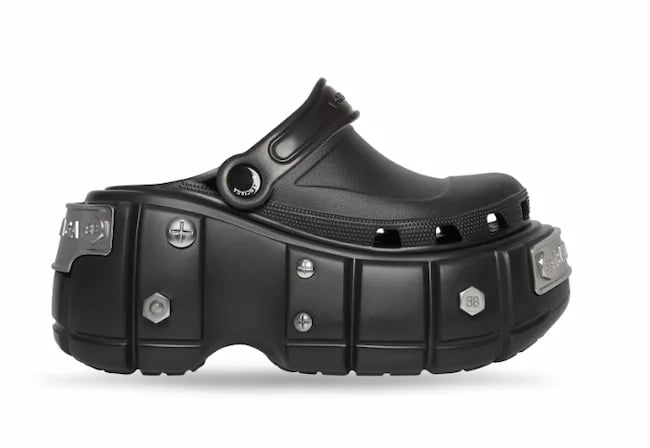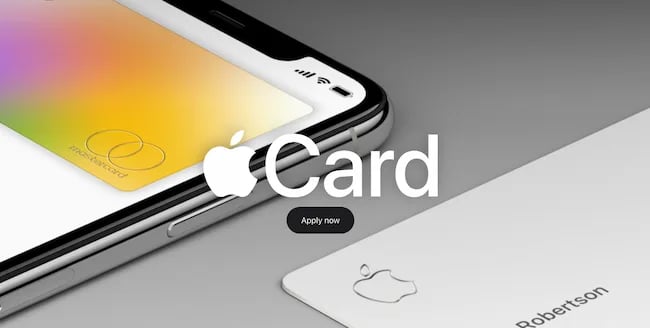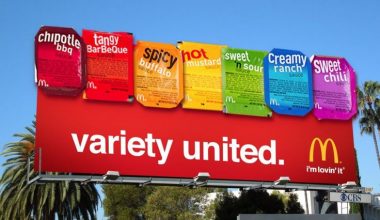Everyone knows how Coca-Cola and Pepsi are always at each other’s necks, right? Now, imagine both companies burying the hatchet, just long enough to launch a drink together. Now, that’s the kind of brand partnership that would rock the world. And such a drink would probably bestow godhood to boot.
However, we don’t have to go too far to imagine what brand partnerships are all about, as they are constantly happening in every industry. In 2016, GoPro entered a brand partnership with Red Bull that helped them sell an average of 4.4 million units over the next four years. This helped solidify GoPro’s status as the world’s go-to action camera.
So, is this all there is to brand partnerships? Read on to find out.
Key takeaways
A brand partnership is a collaboration between two or more companies to create or promote products or services.
If you’re an individual with a lot of social influence, the chances are you could secure a brand partnership.
Brand partnership multiplies your brand’s audience with the audience of another respected brand.
Partnerships can also offer extra revenue from new products and services that your brand might have a hard time tapping into alone.
What are brand partnerships?
A brand partnership is a collaboration between two or more companies to create or promote products or services. It’s a type of marketing technique referred to as co-branding, which involves businesses offering their branded inventory as a single unit or package.
When developing a marketing strategy, companies might consider participating in brand partnerships. This type of collaboration allows them to raise brand awareness, generate leads, and improve revenue. The primary objective is to increase revenue and generate leads.
Through this collaboration, the companies involved can use their existing products or design a new item featuring their brands.
Brand partnerships are a great way to grow, but they aren’t a one-size-fits-all strategy. You need to figure out what type of partnership is best for your current growth needs. So, let’s dig into the process.
Who can secure brand partnerships?
If you’re an individual with a lot of social influence, the chances are you could secure a brand partnership. Typically, we’re talking about creators and influencers online and on social media, such as bloggers, YouTubers, podcasters, Instagram influencers, and TikTok stars.
However, there are no hard and fast rules. Ultimately, anyone who’s in a position to be able to influence others could add value to a partner brand.
For instance, securing brand partnerships can be a valuable stream of income for coaches, entrepreneurs, course creators, and experts of all kinds.
In fact, you don’t necessarily need to have a huge following to secure a brand partnership (although of course, it could help). Micro-influencers who have as few as 1,000 followers in a highly targeted niche can be just as valuable to a partner brand. This is because they’ll often have a high level of influence over a smaller pool of engaged followers.
This can be ideal when encouraging people to buy a partner brand’s products.
Types of brand partnerships
Selecting the right type of partnership is essential to receiving positive results. Consider researching a brand’s audience and market status to gain insight into how two brands can complement each other. This preparedness exercise can help you create a market strategy that fulfills your objectives.
These are the types of brand collaborations you can consider:
Co-marketing partnerships
In a co-marketing partnership, two or more brands agree to promote each other through joint marketing activities like social media contests, co-hosted webinars, and more. This relationship typically is more casual, with no formal contract (although companies may institute agreements for each joint project).
Going back to our initial example, GoPro and Red Bull went the extra mile and built a whole marketing campaign together. Both companies promoted each other on a global scale.
Another example of a co-marketing partnership comes from Clearscope: They regularly partner with other brands to co-host webinars. In December 2022, for instance, Clearscope partnered with Jeff Baker of Baker SEO to co-host a webinar on evaluating search engine results pages.
Co-marketing activities are advantageous to companies that want to:
- Reach a larger audience
- Increase brand recognition
- Acquire more qualified leads
- Generate more buzz around a certain product or event
- Offer prospective and current customers new or different types of content
If your current marketing goals align with these, start looking into brands that offer a different product but target an audience similar to yours.
Affiliation partnerships
An affiliation partnership or affiliate marketing refers to a company collaborating with a website or magazine publisher to promote its products online. The publisher receives a commission depending on the number of clicks, leads, and revenue for the branded company they generate.
For example, suppose you work for an automotive company that partners with an automotive magazine publisher. The publisher can feature banner ads of the automotive brand throughout their website and gain a percentage of the sales generated by each visitor’s click. They may also include the automotive brand in their newsletters or social media posts.
Co-branding or integration partnerships
Co-branding partnerships, also known as integration partnerships, occur when two or more brands work together to create a new product, whether it’s a physical item, an online service, or software.
Think of all the sports brands that partner with famous athletes to create new shoes (e.g., Nike x Michael Jordan). Other successful co-branding partnerships include Taco Bell partnering with Doritos to create the Doritos Locos Tacos Supreme and Google Maps partnering with Spotify to produce an in-navigation music streaming feature.
Brands enter into co-branding partnerships to:
- Increase sales by creating a more useful product or service for their current target audience
- Build relationships with other industry leaders
- Increase brand awareness and loyalty by associating themselves with a well-known brand or public figure
- Reach a wider audience without spending excessive amounts of money
Take note, however, that co-branding partnerships only work between brands that share similar values and target audiences.
Loyalty partnerships
Many companies implement loyalty programs into their business models to maintain customers and generate leads. These programs typically function on a points system, where customers receive rewards, such as discounts or special events, for a subscription fee or continual purchase of that company’s products. Loyalty programs offer an opportunity for brand collaboration with loyalty members receiving exclusive access to a different company’s branded products.
This partnership aims to incentivize customers to remain or join a loyalty program.
For example, a store that sells music and vinyl records may partner with a service that sells tickets for concerts. By joining that store’s loyalty program, you may gain access to a concert’s pre-sale event or a band’s mystery show. This partnership enhances the features of the loyalty program.
Joint product partnerships
When two companies collaborate to create a new product, they form a joint product partnership. You can employ this type of partnership in various ways, such as “powered by” or product mergers. “Powered by” occurs when a software provider collaborates with another company to market their mobile phone, computers, or automotive as being powered by its proprietary technology.
Product mergers occur when two companies that sell the same items unite their brands and potentially increase their influence and presence in a market.
Sponsorship
Sponsorships involve one brand investing in another’s endeavors (e.g., online or live conferences, and events). The sponsoring brand receives perks like the opportunity to set up a booth and market to attendees while the sponsored brand is compensated with money or free products.
For example, Salesforce’s Dreamforce event obtained sponsorships from large companies like Accenture, Deloitte Digital, and IBM. These brands backed Dreamforce to reach the event’s attendees who, according to Salesforce’s sponsorship package, included CEOs, sales leaders, customer service executives, developers, marketing managers, and Salesforce admins.
In exchange, Salesforce offered different services that provided pre-, during, and post-event marketing plans. This enabled the sponsors to extend their audience reach and generate even more leads.
Sponsorships allow brands to:
- Market to an event’s attendees and generate leads
- Build relationships with specific businesses
- Learn more about their target audience by interacting with people at events
- Improve their reputation by sponsoring well-known brands
Brands can patronize more than private entities though; they’ll also fund charity events, podcasts, and professional development courses.
How to reach out to brands for partnerships
So, you’ve decided you want to reach out to brands for partnerships rather than sitting around and waiting for them to contact you. Good for you! Here are some steps you should take:
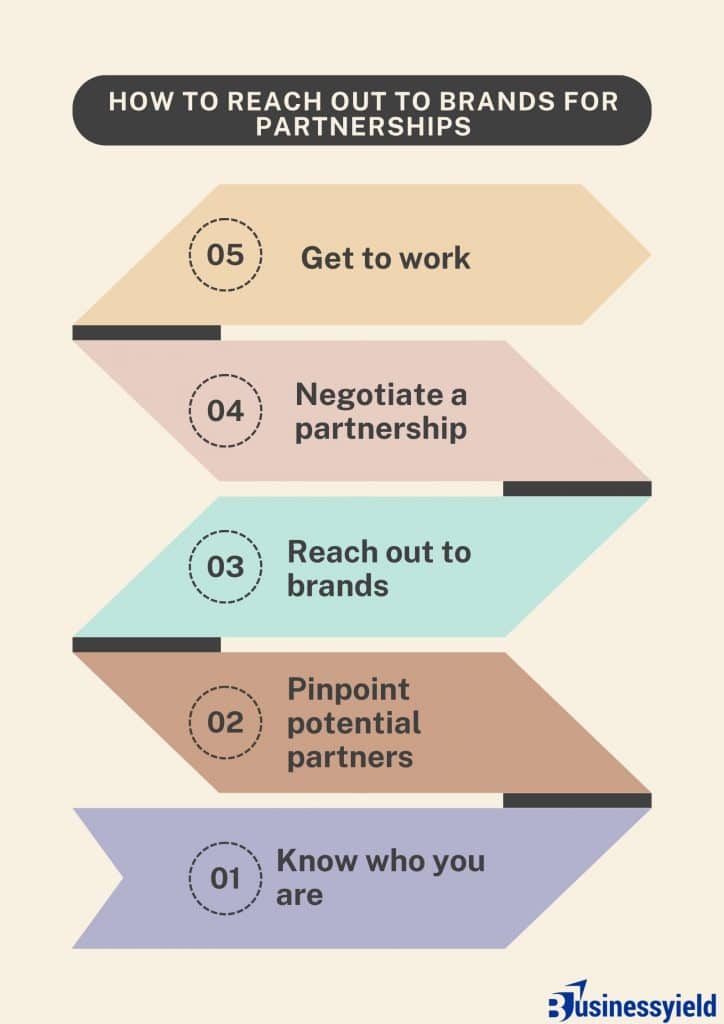
Know who you are
First things first, it’s really important to understand who you are – and we don’t mean that you need to have worked through an identity crisis. Rather, you should have a strong understanding of your niche, your followers, and your platform. Ask yourself the following questions:
- What makes you stand out from other creators?
- Why do your followers enjoy following you?
- What kind of content makes their day?
Remember, you don’t want to be pushing products to your followers that they have no interest in. Instead, you want to market highly relevant products that you know they’ll love – and that you equally believe in and can stand behind.
This will allow you to stay true to yourself and maintain an authentic relationship with your followers despite monetizing your content through partnerships. It will also help you to sell yourself to brands when you get to that point. Being able to identify your USP (unique selling point) – or what differentiates you from other creators – will be a big part of what could encourage them to work with you over your competitors.
Pinpoint potential partners
Next, it’s time to start your search for potential partners. Remember, you’re looking for brands that would be the perfect fit for your platform and followers – but you also need to be the right fit for them. So, consider brands that you think you could add value to.
One of the biggest reasons why partnerships fail is because one partner is gaining more than another. Ultimately, you both need to be benefiting an equal (or at least fair) amount for your partnership to work. With that in mind, look for brands that match your:
- Niche
- Values
- Culture
- Audience
It’s also worth noting that brands come in lots of different shapes and sizes. Brand partners could be anything from the small business next door to a large multi-national label.
Be conscious of the ‘Goldilocks zone’ of partnerships, by which we mean a size that’s not too big and not too small but just right. This is going to be different for everyone and will depend on how many followers you have as well as how experienced you are at working in partnership with brands.
For example, if a brand is too big, you may not have enough followers or influencers to truly make an impact for them, which might rule them out. Meanwhile, if a brand is too small, it might not have the financial means to adequately reward you for your efforts. Whereas there will be a brand somewhere in the middle for which you can make a real impact with what you have (and who can similarly make a real difference to your bottom line!).
Reach out to brands for partnerships
Now that you’ve pulled together a list of potential partners, it’s time to conduct some outreach and suggest a partnership. The brands you’re approaching may well receive several emails from creators and influencers every day. So, it’s important to brush up on successful outreach ideas to make yours stand out in all the right ways.
You might be thinking of sending out a generic email to your whole list. Don’t! Instead, you’ll want to make your email as personal as possible. Do your research about the brand and get familiar with their audience, top-rated content, traffic, current partners and more, so that you can show them you’ve done your homework and your proposal is worth reading.
Similarly, try not to send your pitch to a generic company email address. Instead, send it to a relevant job role at the company, such as a head of partnerships (oh, and make sure to get their name right!). If you have any mutual contacts, make sure to say so – or, if possible, get a warm introduction. This can make all the difference between your email being binned and jumping straight to the negotiation phase.
The articles below can come in handy:
- Formal Writing: “To Whom It May Concern” Letter Examples and Templates
- How to Use “By Way of Introduction” in an Email (+Samples & Free Template)
Also attached below is a checklist of the steps you should follow when suggesting a brand partnership:
How to suggest a brand partnership
Either way, when you’re pitching your proposal, be sure to tell them about how you can bring their brand value. This is likely to include summarising your niche, audience size, demographics, and engagement as well as some information about the type of content you’d like to create to help promote them.
At the end of the day, when you’re reaching out to brands for partnerships, you’ll need to see yourself in a similar light to a salesperson – you have to sell yourself to the brand to convert them. The average salesperson sends two emails to a lead. However, over 50% of sales responses come after the fifth and sixth emails – so, persistence is key.
Negotiate a partnership
It’s a sad fact that not all of the emails you send out are going to illicit a response – no matter how much time you spend crafting them, or how many times you follow up. But if you followed our tips above and you’ve managed to show your value, you’ll hopefully receive some positive responses from brands you really want to work with.
After jumping up and down and high-fiving your nearest friend or family member, you’ll need to reply negotiating your terms and finalizing the deal. This is the time to get down to the real nitty-gritty, formalizing your agreement on things such as:
- Compensation
- Deliverables
- Who’s responsible for what
- Deadlines
- Duration
- Expenses
- Free products or discounts
- Exclusivity
- Ownership or copyright
Ultimately, the goal is to agree on every little detail before you start working together. This will ensure that you’re on the same page so that the partnership can play out as smoothly as possible.
Make sure to put yourself in the brand’s shoes when you’re negotiating – and help them to put themselves in your shoes too. You may both need to compromise on certain aspects, but you’ll hopefully be able to reach an agreement that’s mutually beneficial and that you’re both excited about.
Get to work
Last but certainly not least, it’s time to get to work creating the agreed deliverables!
Make sure that you don’t go off the radar at this point. Instead, keep the brand updated on your activities so that they can feel confident that you’re working to the agreed terms and expectations. Some brands will want to approve every promotion you create before it goes live, whereas other brands will give you more creative license to do things your own way – especially if you’ve worked together before and they’ve been happy with the results.
Once your agreed promotions have been pushed out, that’s not quite the end of the story either. Rather, you’ll want to spend some time measuring the impact of your promotions – what feedback did you receive from your followers? What levels of engagement did you see?
Pass on as many stats as possible to your partner brand.
If the promotion goes well, this will stand you in good stead to negotiate further partnerships with them in the future – or to extend your existing partnership. But even if the figures aren’t what you hoped, the act of measuring should put you in the brand’s good books as they see that you’re taking the job seriously and looking for ways to better yourself.
You could always explain where you think things went wrong and what you would do differently next time, as a way of leading into a conversation about the future.
Importance and benefits of brand partnerships in business
Expand your brand’s reach
Brand partnership multiplies your brand’s audience with the audience of another respected brand. So, you add reach with your partner’s customers and followers, and they add reach with your fans.
A co-branding partnership is more than the sum of its parts. Your collaboration can help both partners expand brand reach into new locations, demographics, and more. Plus it can reinforce your brand positioning.
Cost and resource-sharing
Marketing and branding efforts can be expensive, especially at scale. A brand partnership gives both teams the resources of their partner — adding more staff, budget, and knowledge to each campaign. It also offers great learning opportunities for your team.
Improve brand trust and customer loyalty
If you have a new brand, you can boost your reputation with an established brand. This helps build trust with customers because it shows them you respect consistency. It combines their loyalty to another brand with the value they believe your brand can offer.
If you’re running an established brand, partnering with a fresh startup brand shows your investment in innovation. This could translate to new and exciting products or a hot take on culture or messaging.
Boost sales and revenue
An expanded audience, more brand trust, and loyalty from return customers logically translate to sales. Partnerships can also offer extra revenue from new products and services that your brand might have a hard time tapping into alone.
Examples of successful brand partnerships
GoPro & Red Bull: Stratos
GoPro doesn’t just sell portable cameras, and Red Bull doesn’t just sell energy drinks. Instead, both have established themselves as lifestyle brands — in particular, a lifestyle that’s action-packed, adventurous, fearless, and usually pretty extreme. To make the partnership work, GoPro equips athletes and adventurers from around the world with the tools and funding to capture things like races, stunts, and action sports events on video — from the athlete’s perspective.
At the same time, Red Bull uses its experience and reputation to run and sponsor these events.
While both brands have collaborated on many events and projects together, perhaps the biggest collaboration stunt they’ve done was “Stratos,” in which Felix Baumgartner jumped from a space pod more than 24 miles above Earth’s surface with a GoPro strapped to his person. Not only did Baumgartner set three world records that day, but he also embodied the value of reimagining human potential that defines both GoPro and Red Bull.
“GoPro camera technology is allowing us to complement the programming by delivering new athlete perspectives that have never been seen before,” said Sean Eggert, Red Bull’s former VP of sports marketing.
The collaboration continues to use exclusive GoPro content to enhance both companies’ growth.
BMW & Louis Vuitton: The Art of Travel
Car manufacturer BMW and designer Louis Vuitton may not be the most obvious pairings. But if you think about it, they have a few important things in common. If you focus on Louis Vuitton’s signature luggage lines, they’re both in the business of travel. They both value luxury. And finally, they’re both well-known, traditional brands that are known for high-quality craftsmanship.
These shared values are exactly why this co-branding campaign makes so much sense. In their partnership, BMW created a sports car model called the BMW i8, while Louis Vuitton designed an exclusive, four-piece set of suitcases and bags that fit perfectly into the car’s rear parcel shelf.
Although the four-piece luggage set goes for a whopping $20,000, the price is right for the target customer, as the BMW i8 starts at $135,700. A price like that kind of makes that luggage set seem like a drop in the bucket.
Not only does the luggage fit perfectly size-wise, but its design and appearance fit perfectly with BMW’s image: sleek, masculine, and high-quality. Both the luggage and some parts of the car’s interior also use carbon fiber, a strong yet light composite material.
Both brands knew their target market desired luxury and meticulous craftsmanship. By selling complimentary high-quality products, the brands successfully garnered attention from respective loyal customers.
Kanye & Adidas: Yeezy
Kanye West partnered with Adidas in 2015 to develop a high-end footwear line called Yeezy. The combination of Kanye’s personal brand and Adidas’ growing streetwear segment made for robust company earnings and brand growth.
While initially an excellent brand partnership for both partners, some might also see this as a brand partnership failure as the brand cut ties with Yeezy in October 2022 due to harmful remarks and behavior. This led to a $655 million loss in sales at the end of that year. The brand began selling Yeezy merchandise again in May 2023, donating some of the proceeds to social justice organizations.
Balenciaga & Crocs: Hard Crocs
Balenciaga and Crocs have been making headlines with their fun fusion of aesthetics since 2018. But the most recent pairing got a boost from Eliot Page on the red carpet in 2022.
These brands clearly align in their dedication to innovation and individuality. As Balenciaga Creative Director Demna states in GQ, “I am not interested in anything average, including the average consumer…if someone is personally offended by Crocs, there might be a more serious problem within that person than the design of a shoe.”
This high fashion brand uses Crocs’ accessible shoe brand to expand and reinforce its experimental ideas. Then, it places those experiments in public spaces to create excitement and engagement with the audiences for both brands.
Apple & MasterCard: Apple Pay
Sometimes, co-branding partnerships aren’t just cool projects between two companies — they actually have practical value when the companies work together.
When Apple released the Apple Pay app, the brand effectively changed how people perform transactions. This app allows people to store their credit or debit card data on their phones, so they can use them without physically having the card with them. However, for this app to succeed, it needs credit card companies to integrate with this technology. By the same token, credit card companies also face more competition if they aren’t compatible with the latest consumer purchasing tool.
To get ahead of its competition, MasterCard became the first credit card company to allow its users to store their credit and debit cards on Apple Pay. This relationship continued to be useful for both Apple and Mastercard with the release of the Apple Card. MasterCard not only shows continuous support of a major consumer tech developer in this partnership — it evolves with its customers in how they choose to make purchases.
Recommended Articles
- 17+ Creative Advertising Ideas to Grow Your Brand 2024
- How Businesses and Lawyers Form Powerful Partnerships
- PERSONAL BRANDING: Definition, Examples, Tools & All You Need To Know
- From Juggling to Thriving: The Mompreneur Guide to Success in 2024
- Revenue vs Sales: A Comprehensive Guide to Distinguishing Revenue From Sales
- What Is Gross Sales? How to Calculate It, Examples, and Net Sales Comparison
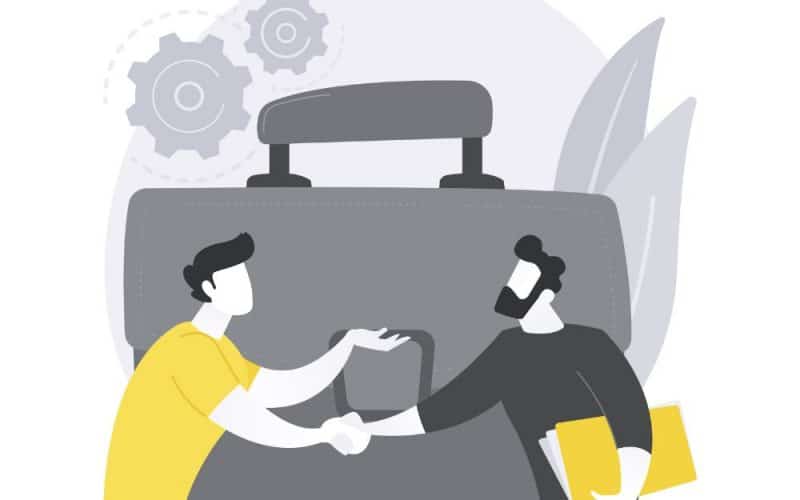

-4.jpeg?width=550&height=337&name=21%20Examples%20of%20Successful%20Co-Branding%20Partnerships%20(And%20Why%20Theyre%20So%20Effective)-4.jpeg)
